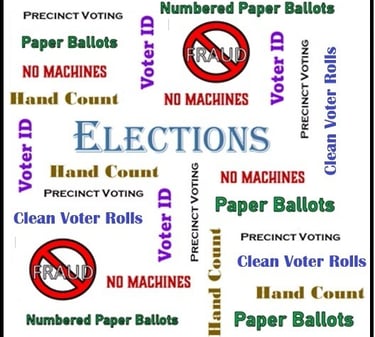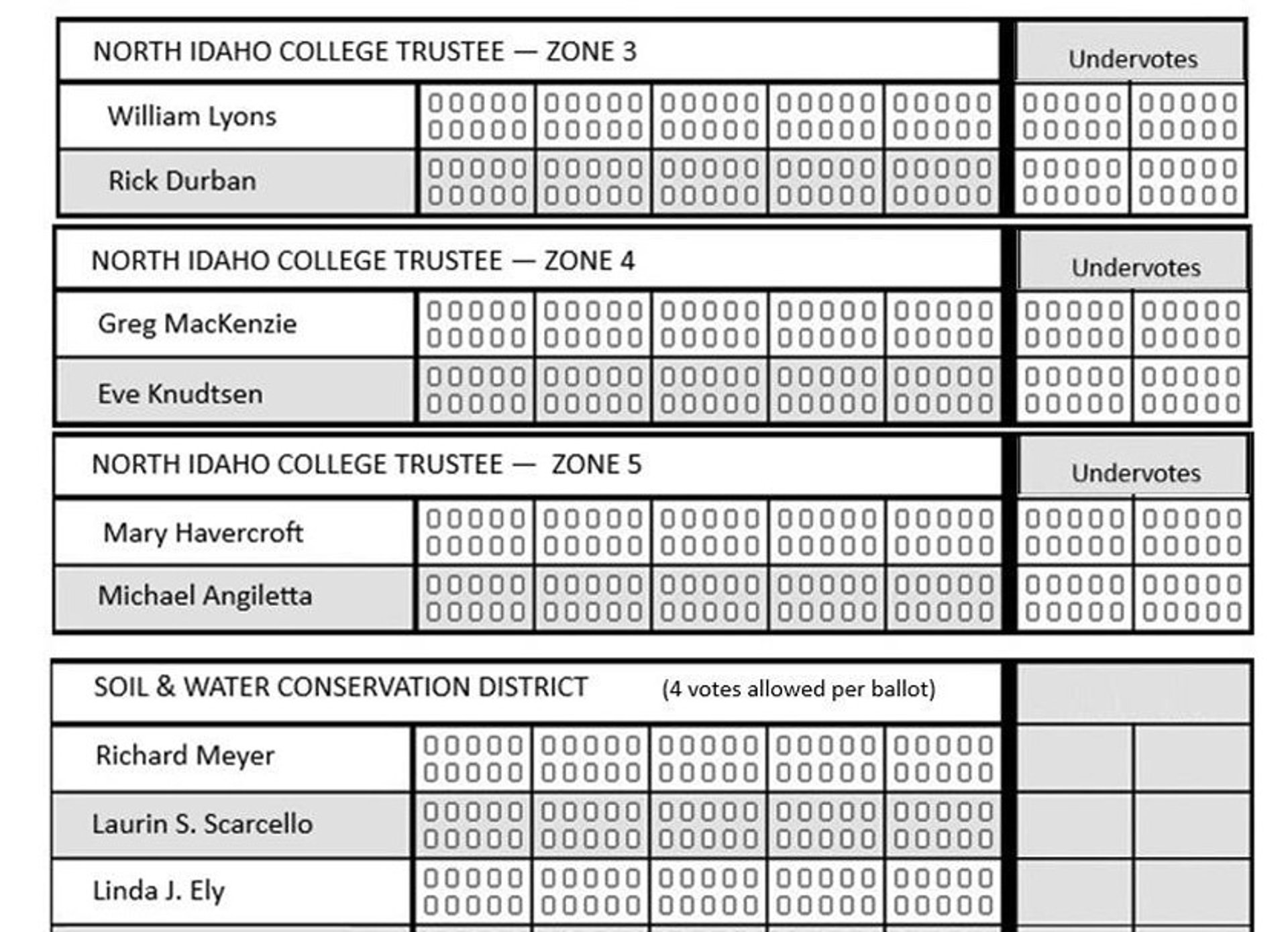
A Truly Transparent Tabulation System
The Eye on Elections Team has developed a method of hand-counting that is transparent, effiicent, and easy to implement. This is a positive solution for the serious problem of riggable electronic tabulation systems in Idaho.
6/28/20257 min read
Eye on Election volunteers recently conducted a “Mock Precinct Count” in order to demonstrate that an efficient, transparent system of hand-counting could be a practical alternative to riggable electronic tabulators. This article introduces Truly Transparent Tabulation (TTT), a system of processing ballots that minimizes opportunity for fraud.
In a follow up article, Refuting the Hand Count Critics, we evaluate the results of the Mock Precinct Count, to determine if the TTT system of hand-counting is a practical alternative to machine tabulation.
Assuring Verifiable Ballot Images—Eye on Elections resolved to make photocopying ballots and releasing them to the public, immediately after they were removed from the ballot box, the KEYSTONE of the Truly Transparent Tabulation system. The reasons this is necessary, and the manner in which we guarantee the ballot images generated exactly match the physical ballots, has been discussed in other articles, but in short, it is essential that the physical ballots be
Photocopied IN PUBLIC, at the polling station, immediately after they are removed from the ballot box.
Photocopied using a "stand-alone" commercial document scanner that is NOT hooked up to a computer and cannot possibly modify ballot images, and
Sorted, scanned, tabulated, and stored in batches of 50 so that both tally sheets and ballot image files can be easily identified with the physical ballots at any time.
Preventing Fraud, Correcting Errors—It is not enough to create verifiable ballot images; they must also be released to a publicly viewable website as soon as possible after the polls close. Making reliable ballot images public immediately accomplishes three critical goals.
It makes falsifying ballot images or swapping out ballots at a later time impossible.
If anyone cheats, counts incorrectly, or makes errors, these problems can be easily found and corrected.
It gives any candidate or citizen who objects to the results all the data they need to organize an independent recount that can be completed BEFORE results are certified.
For these reasons, producing verifiable ballot images and uploading them to a publicly viewable website is an essential element of the Truly Transparent Tabulation system, and it is more important than the precise manner in which votes are counted. (Note: ballot counting can probably done by A.I. in the future, but if it ever was, something like the TTT system of making verified ballots public is all the more important).
There are other factors, such as efficiency and accuracy, that needed to be considered in developing the TTT system. However, they can be better explained in a follow up a article, when we look at the data from the Mock Precinct Count, and Refute the Hand Count Critics.
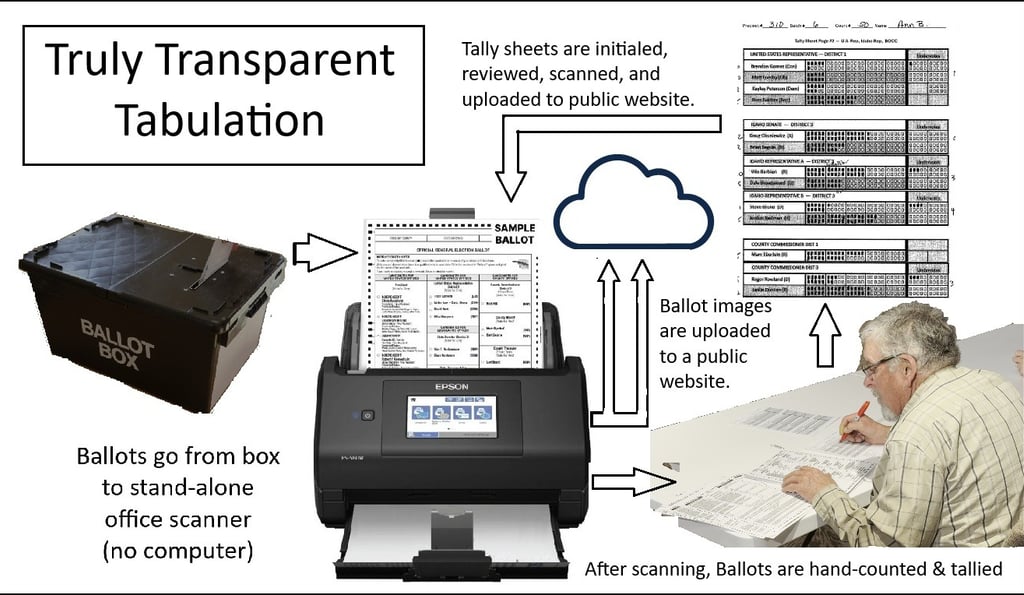

Transparency First and Foremost
Idaho statutes do not specify exactly how ballots should be counted, so Eye on Elections was free to develop a method of ballot processing that prioritizes transparency above all. The system of tabulation illustrated below takes the principle that most election documents are public, and should be accessible to the public, to its logical conclusion. Therefore, as a KEY part of the tabulation process, all important election documents,—including ballot images, tally sheets, and tabulation records—are photocopied and made public as quickly as possible.
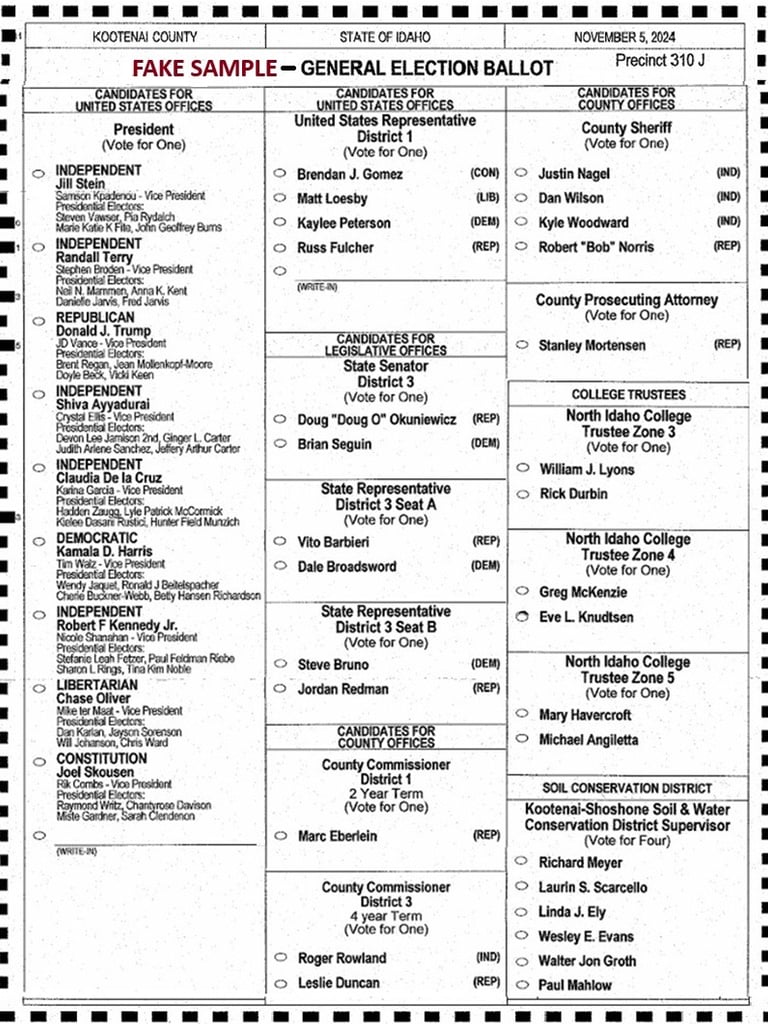

Truly Transparent Tally Sheets
Another innovative aspect to the Truly Transparent Tabulation system is the design of its tally sheets. The TTT Tally sheet was designed after studying the systems used by hand counting groups in other states, but with significant adjustments.
Batch Size of 50—A batch size of 50 ballots was chosen because that is an easy number for a single counter to process and also because the document scanner used by the TTT team handles batches of 50 ballots reliably. But are numerous other advantages. Because only 50 ballots are tallied at once, numerous races can be counted on each tally sheet, and candidate names are clearly visible. The inclusion of candidate names enhances accuracy in counting and also readability, so that anyone who views the tally sheets posted online can easily verify the data.
Customized Tally Sheets—TTT tally sheets are composed of modules ranging in size from one-candidate to ten-candidate contests that are organized to reflect the design of the ballots, and can be customized at the precinct level to fill in candidate names and offices. Anywhere from two to six races can typically fit on a single tally sheet, and counters typically work through all fifty ballots one time for each tally sheet.
Shown below are is the sample ballot used for the Eye on Election Mock Precinct Count (based on 13 contests from the Nov 2024 election), and the Precinct 310 tally sheet corresponding to column 2 of the sample ballot.
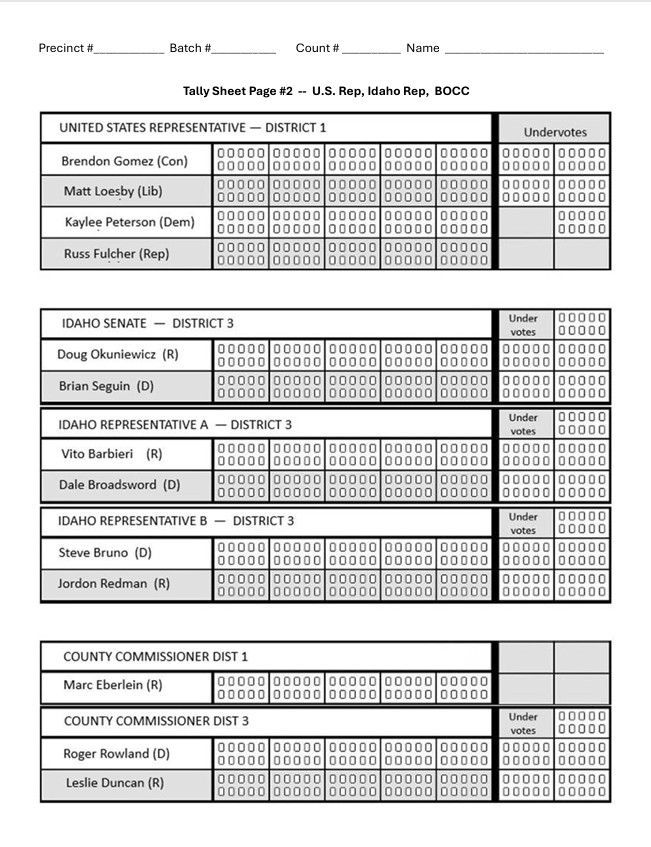

Sample Ballots—The Eye on Election group attempted to obtain expired ballots from the Nov 2022 election but was unable to do so. For this reason, the ballot counting group created and marked Sample ballots using 13 of 22 races from a recent election.
Laptop with Spreadsheet and numeric keypad—The TTT system of hand counting is paper-based, but at some point the data from the paper tally sheets data must be entered into an electronic spreadsheet, and passed on to the county clerk and SOS. This operation is handled by the counting judge and requires a simple laptop running a standardd spreadsheet program. A chromebook or laptop with a numeric keypad, available for about $200, would be sufficient. One laptop is needed for every counting judge, and a counting judge is needed for every 3-4 counters.
Other Supplies—The only other items needed for the TTT system are routine office supplies, such as sharpies, pencils, post its, paper clips, binder clips, paper, earplugs, and thumb drives.
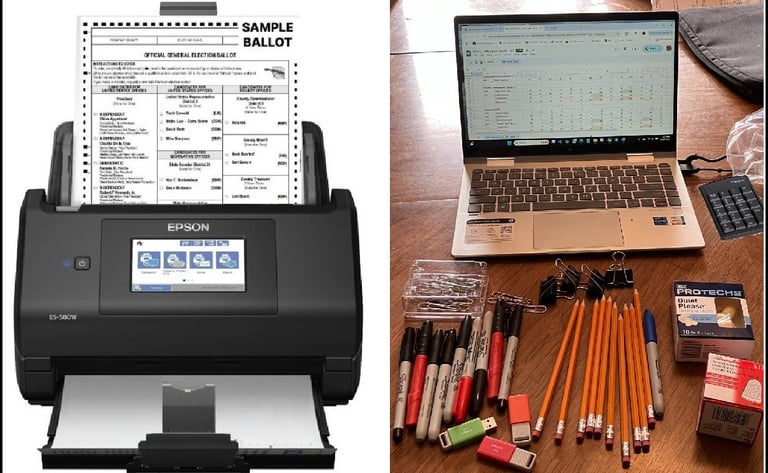

No Proprietary Hardware or Software
One of the guiding principles the Truly Transparent Tabulation System is that it must not rely on propriety electronic products. Verifiable paper-based election documents, general purpose data management software, commercial off-the-shelf office supplies are all that is required. All of the supplies listed below can be found at any office supply store, and require no specialized training. Basic skills that any office worker must master in order to maintain institutional data is all that is required of TTT counting judges.
Document Scanner—The importance of publicly photocopying all ballots immediately after the ballot box is opened using a scanner that does not have the capability of modifying ballots is the keystone of the TTT system. This requires that every polling station be equipped with a “stand alone” commercial document scanner that can operate without being hooked up to a computer, or to the internet.
The document scanner we found most suitable for this purpose was the EPSON 580W, at a cost of approximately $350. It scans up to 30 ballots per minute, and can easily process an entire precinct of 1000 ballots in less than an hour.
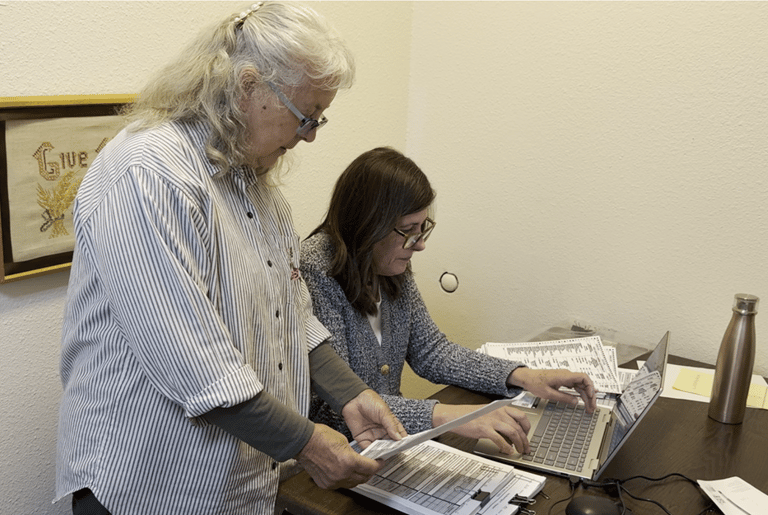

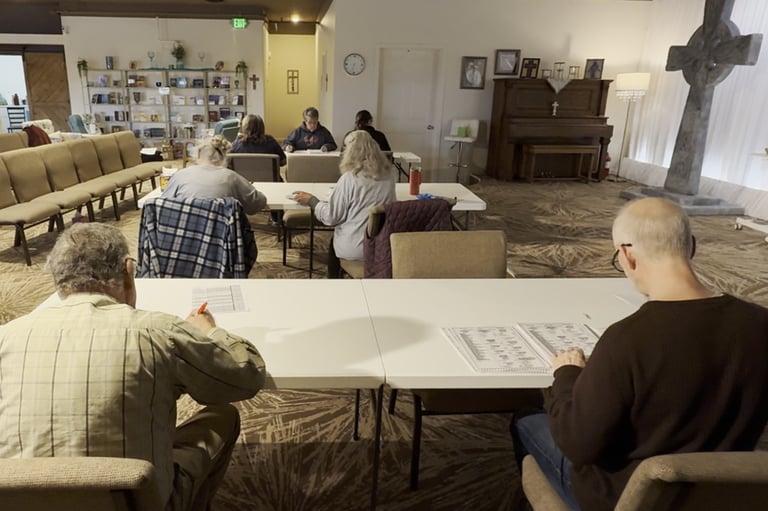

Truly Transparent Tabulation—Mock Precinct Count
In this section we review the step by step process the Eye on Election TTT team went through during the Mock Precinct Count.
Sorting and Scanning—Ballots are entered into the ballot box in any direction, but to be hand tallied they must be put in a uniform direction in groups of fifty, and in some cases sorted by ballot type. The process of initially sorting ballots into batches went quickly, taking only 3-4 minutes to sort and another 2-3 minutes to photocopy. Once ballots were scanned, they were assigned to a counter.
The first seven batches were sorted and scanned within 30 minutes, and assigned to counters. And All 14 files of ballot images were were upload to a public file server just an hour after the ballot box was opened.
Counting—When a batches of ballots is assigned to a counter both judge and counter must initial the tally sheet so there is a public record of who counted each batch. The time at which the batch was assigned and returned are also recorded.
The seven counters who participated in the mock precinct count were already trained to count ballots, but written instructions were provided. The document TTT Instructions for Counters and Counting Judges explains what to do in the case of undervotes, overvotes, write in candidates, uncontested offices, and other irregular situations. Tallying times for batches of 50 ballots ranged from 40 minutes to a little more than an hour, or approximately 5 seconds per contest. More specifics about tallying times is presented in the follow-up article Refuting the Hand Count Critics.
Totaling and recording Vote Counts—When counters finish processing a batch of ballots, they return the ballots and tally sheets to the counting judge, and are given a new assignment. The counting judge records the finish time, tallies the scores, and enters final vote counts into a spreadsheet. The judge then makes sure all ballots are counted for each race by verifying the checksum, and doing a spot recount in case of any errors.
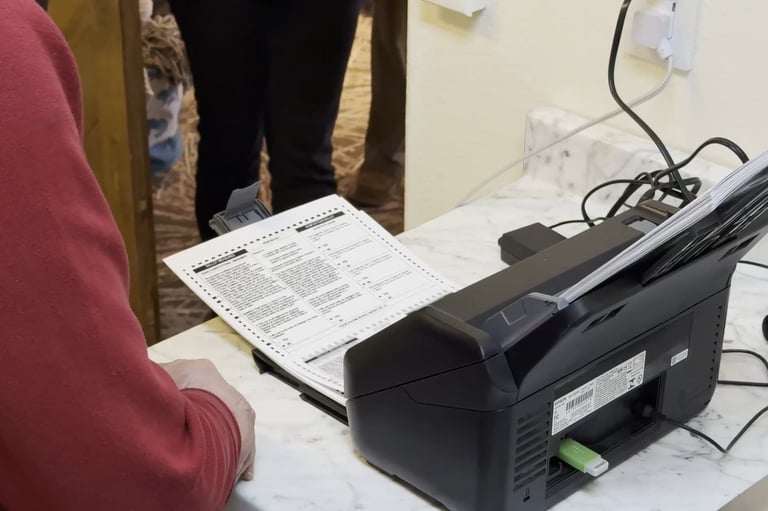

Conclusion
Overall, the TTT counting process went smoothly, and the time taken by counters to complete each batch were better than expected. Most of the problems that arose occurred at the back-end, and the main problem was that one counting judge was not sufficient for seven counters. In the future a 3-4 ratio between judges and counters would be more effective, and a few improvements could be made to the process of data entry. For more information see related articles:
Refuting the Hand Counting Critics goes over the data collected during the TTT teams' Mock Precinct Count, and provides solid answers to critics who claim that hand-counting is impractical for high turnout elections.
The Problem with Computerized Elections explains the architectural flaw in ALL electronic tabulators that makes them vulnerable to fraud, and explains how Eye on Elections is working to reform elections in Idaho by simplifying computerized systems.
Transitioning to Truly Transparent Tabulation shows how systems that current use electronic tabulators can transition to more reliable and open systems of vote counting gradually, and without disruption. (coming soon).
If you would like to learn more about Election Fraud in Idaho and possible solutions, please subscribe to the Eye on Elections newsletter, by filling in the form below.
Empowering Voters
Advocating for transparent, honest, and decentralized voting systems.
Please subscribe to the Eye on Elections Newsletter.
Contact us:
© 2025. All rights reserved.

